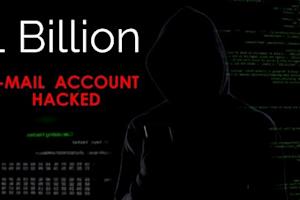Protocolo de escritorio remoto: qué es y por qué la preocupación por la seguridad
El Protocolo de Escritorio Remoto (RDP) es un protocolo de Microsoft diseñado para conectarse a otro ordenador de forma remota.
RDP comes with some very convenient features including screen sharing and the ability to give complete remote control of a device to an IT expert providing technical assistance to a user from far away.
Aunque esta tecnología es utilizada actualmente por millones de personas en todo el mundo, existen crecientes preocupaciones en materia de ciberseguridad, concretamente por ser utilizada como vector de ataque para el ransomware.
According to Kaspersky, in early 2021 alone there were more than 377.5 million brute-force attacks targeting RDP. And last year was not any better. RDP attacks grew from 91.3 million in January to more than 277.4 million by March 2020 alone. That's a 197% increase in 3 months!
Considering such a dangerous increase in ransomware attacks targeting RDP, it's time for businesses - especially those with information technology (IT) environments relying on RDP to reconsider their reliance on this now decades-old remote access protocol.
Why Is RDP So Insecure and Increasingly Targeted by Cybercriminals?
Hemos preguntado a algunos expertos en ciberseguridad de diferentes sectores.
According to Todd Gifford, CTO at Optimizing IT, "RDP has historically been an insecure method of gaining console access to machines across a network because it is enabled by default and open to all on the internet at a network level." And “in many cases," says Todd, "that default open-to-all approach hasn't ever changed, and as a result, there are no good password controls complexity, and account lockout."
Rajesh Parthasarathy, fundador y director general de MENTIS, explica por qué el RDP carece de funciones de seguridad tan cruciales.
"Imagine a city built without planning – houses built as per convenience, roads built to offer the least amount of travel, commercial areas, and industries built as per space availability," says Rajesh. "As time progresses, and more and more people start moving in, the city will collapse as it fails to adapt to these evolving needs - RDP or Remote Desktop Protocol suffers from a similar shortcoming."
In other words, RDP was not built to handle today's security concerns and requirements. Hence, it has become outdated and vulnerable to threats, which cybercriminals have noticed.
"Entire attacker ecosystems exist to find open RDP instances and either steal credentials through phishing or guess commonly used username and password combinations until the right pair is found," says Jason Rebholz, CISO at Corvus Insurance.
To this, Todd adds that after working to continuously guess RDP passwords, cyber criminals eventually get in. And "Once the attackers log in," says Todd, "they disable or remove any anti-malware service as well as any logging or any software that might alert an admin to any problems."
Bram Jansen, Chief Editor of vpnAlert, says that "once your endpoint protection is disabled, no security solution will be able to help you if this happens."
Si RDP es tan inseguro entonces, ¿por qué la gente sigue usándolo?
En una entrevista reciente con Jerry Hsieh, Director de Seguridad Director de Seguridad & Compliance de Splashtop, exploramos esta cuestión.
According to Jerry, IT staff continue to use RDP because it is often free and easy as it is built-in within Microsoft. "This means IT teams don't need to purchase anything special," explains Jerry. "It comes with your Microsoft license, although RDS (Remote Desktop Services) requires additional licenses."
Con cada vez más ataques de ransomware dirigidos a RDP, es hora de explorar alternativas.
Alternativas al protocolo de escritorio remoto inseguro
Redes privadas virtuales (VPN) sobre RDP
Dado que el RDP no es seguro en primer lugar, a menudo sólo se habilita para el acceso a la red interna. ¿Pero qué pasa si los usuarios quieren usar RDP fuera de la red corporativa? Es entonces cuando se considera el uso de una VPN junto con RDP.
Una red privada virtual, o VPN, crea una conexión a Internet entre dos lugares para permitir a sus usuarios acceder a los ordenadores y archivos de esa red de forma remota. Como la VPN se considera una extensión de la red corporativa, la gente piensa que es "seguro" ejecutar RDP a través del túnel VPN. Sin embargo, hay muchas vulnerabilidades de VPN que se han revelado a lo largo de la década.
Las preocupaciones de seguridad de las VPNs incluyen:
VPN infrastructure updates are primarily manual, not automatic. That is because critical security features like multi-factor authentication and device authentication are not always included. This can expose remote devices and corporate networks to lateral threats, such as ransomware - the same threats that concern RDP.
VPNs are not Zero Trust Network Access ready.
A Zero Trust Network Access (ZTNA) framework is made of a set of technologies that operates on an adaptive trust model. Access to information and networks is granted only according to user permissions. Ultimately, the ZTNA framework gives users seamless connectivity without compromising security or safety for both individuals and their data. Due to the way traditional VPNs work, they cannot support ZTNA. For all these security concerns, a 2019 Gartner report predicted that by 2023, 60% of enterprises would phase out their remote access VPN in favor of more secure solutions.
Además, las VPN tienen considerables inconvenientes de escalabilidad y rendimiento:
Como una VPN no está construida para manejar un tráfico pesado y múltiples usuarios a la vez, es difícil desplegarla a escala para satisfacer las necesidades de una fuerza de trabajo totalmente remota o híbrida
La ampliación de una red VPN requiere la actualización de la CPU/memoria de la VPN, lo que se traduce en un proceso largo y complicado para el departamento de TI. Y a menudo, las VPN no ofrecen la opción de actualización. Esto obliga a muchos usuarios a comprar un modelo de gama alta que es mucho más caro.
Each employee needs a company-issued device for a VPN to work in a remote office setup. As a result, BYOD devices (such as employees' home devices) cannot be leveraged.
Software de acceso remoto: ¿la alternativa moderna a RDP?
Al igual que el RDP y la VPN, el software de acceso remoto ofrece la posibilidad de acceder a un ordenador o dispositivo desde otro dispositivo, en cualquier momento y desde cualquier lugar.
Unlike a VPN, remote access software is built to handle high traffic and provides complete access to remote computers' files and applications, regardless of the network. This makes it more suitable than a VPN for a remote or hybrid environment.
Unlike RDP, remote access software is also more prepared to handle today's security concerns. It comes with built-in security features like SSO (Single Sign-On), MFA (Multi-Factor Authentication), device authentication, and automatic infrastructure updates to keep updated with security standards. It’s almost maintenance free.
While there are many remote access software providers in the market, Splashtop offers one of the most secure in the market. Although some remote access software companies build their software on top of the RDP infrastructure, Splashtop took a different approach to create something unique for the sake of security and a better user experience. This positions Splashtop software as a next-generation remote access software built to handle today's security challenges in remote connections.
¿En qué se diferencia el software de acceso remoto de última generación Splashtop de RDP?
El cofundador y director de tecnología de Splashtop, Phil Sheu, respondió a esta pregunta en una reciente entrevista de Splashtop en RDP.
"Let's say you have a house on the street, the door is open, and all your belongings are basically on display, "says Phil. "While the entire surrounding area wouldn't know that your door is open, anyone walking by can easily tell that no one is home, and your door is open." That scenario depicts RDP.
"Now take this same house and put it in a gated community with a guard, shut the door, and lock the gate," continues Phil. "The security guard is checking visitation permissions, no one outside the gate can see your house and its belongings, whether or not you are home, and you can invite a particular person in, but you do not have an open invitation for anyone else to peek in."
That's how you should visualize Splashtop next-gen remote access software and how it is fundamentally safer and better than RDP and VPN.

Splashtop 次世代リモートアクセスインフラストラクチャ
Haven’t tried Splashtop yet? Try it for free.




